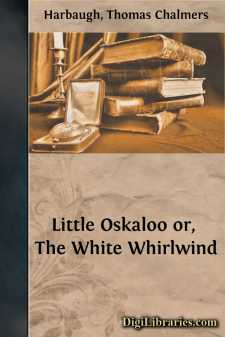Categories
- Antiques & Collectibles 13
- Architecture 36
- Art 48
- Bibles 22
- Biography & Autobiography 813
- Body, Mind & Spirit 142
- Business & Economics 28
- Children's Books 16
- Children's Fiction 13
- Computers 4
- Cooking 94
- Crafts & Hobbies 4
- Drama 346
- Education 46
- Family & Relationships 57
- Fiction 11829
- Games 19
- Gardening 17
- Health & Fitness 34
- History 1377
- House & Home 1
- Humor 147
- Juvenile Fiction 1873
- Juvenile Nonfiction 202
- Language Arts & Disciplines 88
- Law 16
- Literary Collections 686
- Literary Criticism 179
- Mathematics 13
- Medical 41
- Music 40
- Nature 179
- Non-Classifiable 1768
- Performing Arts 7
- Periodicals 1453
- Philosophy 64
- Photography 2
- Poetry 896
- Political Science 203
- Psychology 42
- Reference 154
- Religion 513
- Science 126
- Self-Help 84
- Social Science 81
- Sports & Recreation 34
- Study Aids 3
- Technology & Engineering 59
- Transportation 23
- Travel 463
- True Crime 29
Little Oskaloo or, The White Whirlwind
Description:
Excerpt
CHAPTER I.
HISTORY AND A MYSTERY.
If, in the month of July, 1794, an observing white man could have traveled unmolested from the banks of the Ohio river due north to the famous Maumee rapids, he would have been struck with the wonderful activity manifested in the various Indian villages on his route.
No signs of idleness would have greeted his eye; the young warrior did not recline in the shadow of his birchen lodge enjoying the comforts of summer life in mid forest. If his image was reflected in the clear streams, it was but for a moment, as his lithe canoe shot from bank to bank. Everything between the two rivers portended war.
Indian runners were constantly departing and arriving at the several native villages, and excited groups of Shawnees, Delawares and Wyandots discussed—not the latest deer trails nor the next moon-feast, but the approaching contest for the mastery of power.
A few years had passed away since they had met and conquered Harmar and St. Clair. Those bloody victories had rendered the Indian bold and aggressive. He believed himself invincible, and pointed with pride to the scalps taken on the ill-fated 4th of November, ’91.
But a new foe had advanced from the south—treading in the tracks of St. Clair’s butchered troops, but with his stern eye fixed on victory. The Indians were beginning to exhibit signs of alarm—signs first exhibited at the British posts in the ““Northwestern Territory,” where the powers and generalship of Wayne were known and acknowledged.
It was the impetuous, Mad Anthony who led the advancing columns through the Ohio forests. He had entered the blood-drenched territory with the victory of Stony Point to urge him on to nobler deeds, and with the firm determination of punishing the tribes, as well as of avenging the defeat of his predecessors.
Tidings of his advance spread like wildfire from village to village, and councils became the order of day and night alike.
The Indians knew the Blacksnake, as they called Wayne, and some, in their fear, counseled peace. But that was not to be thought of by the chiefs and the young Hotspurs whose first scalps had been torn from the heads of Butler’s men.
Such sachems as Little Turtle, Blue Jacket, and Bockhougahelas stirred the Indian heart, and not a few words of encouragement came from the British forts on the Maumee.
Simon Girty and kindred spirits moved from tribe to tribe underrating Wayne before the august councils, until a united cry of “war to the knife!” ascended to the skies.
The chase suddenly lost its charms to the scarlet hunter; the dandy turned from his mirror to the rifle; the very air seemed heavy with war.
The older warriors were eager to lay their plans before any one who would listen; they said that Wayne would march with St. Clair’s carelessness, and affirmed that the order of Indian battle, so successful on that occasion, would drive the Blacksnake from the territory.
Under the Indian banner—if the plume of Little Turtle can be thus designated—the warriors of seven tribes were marshalling....


